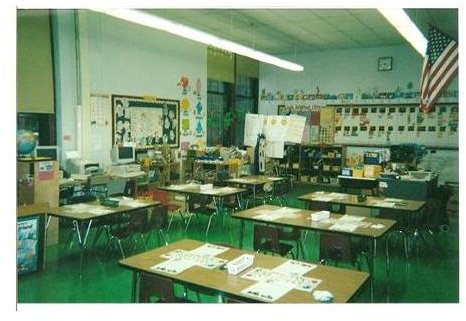Organizing a Kindergarten Classroom: Tips, Layout Ideas and Organization
Organization Steps & Ideas
Use these steps to start the year, any time during the year when you need a change, or in years to come.
1- Consider Physical Layout. Take an objective view of the physical layout of the classroom. Consider the stationary things in the room, in other words, the things that cannot be moved like the windows, black board, bulletin boards, sink (if available), outlets and closets. Sometimes computers must be stationary as well, due to the Internet connection.
2- Flow of the Classroom. Think about the flow of the classroom. When students enter into the classroom where will they go first, next and so on? Ideally mailboxes should be placed near the doorway for easy access at the beginning and end of the day. Is there anything between the entrance area and the student’s desk that may be distracting? For example, if Kindergarten students pass the Dramatic Play area when they walk in, they be distracted each morning.
3- Functionality. Next, think about how to place the desks so that the blackboard or dry erase board is easily visible to all students. Desks should be placed in groups or pairs to foster social and intellectual interaction between the children. One way to test this is to actually sit down in each chair after you have placed them. Art materials like scissors, glue and crayons and writer notebooks, word work notebooks, poetry notebooks and so on should clearly identified and near the desk area for minimal movement from one activity to another. This can be done by labeling the tables with a color, and have a coordinating color bin for each table to place their supplies.
Kindergarten teachers will make frequent use of an area rug or meeting area. Think about the flow from one area to the next. Is it safe? Is it close? When excusing students to their seats, can they get there without stepping on one another? Make preparation for students with physical needs as well. Again, a good test is to sit on the rug after it is placed where you’d like it to be.
Messy areas like science or art should be close to a sink, if available.
4- Label the Room/Centers. Once the room has been set and materials placed, label the room. This is especially important in a center based room. It should be clear to anyone who enters where the math center is and what is happening there. Make displays purposeful. Today’s classroom should show active involvement in learning, not just cute displays and artwork. Let the room to reflect what is happening currently and update regularly.
5- Literacy, Literacy, Literacy. Next when someone walks into the door what is the first thing that he or she will notice? Ideally that it is a literature rich classroom. The room should shout to the visitor, “We read here!” To foster a love of reading, books must be easily identified in every learning area. For example, in the science center the children have access to books about general science and the nonfiction theme they are learning about. Most of the books should be placed near and around the rug/meeting area. Books should be clearly organized and labeled according to theme or author. Pictures and words will help new readers. For example if you have a theme basket about food, then the word food is accompanied by pictures of food. This will make clean up a breeze for you and the students.
6- Personal Needs and Flair. Last, you want your room to feel comfortable to work in. It will be a reflection of your personality. Think about the material that you need quick access to, is it readily available? Rolling carts are great for dry erase markers, numbers, letters or any small material that you need to have nearby or may need to move.
This post is part of the series: Teacher Organizational Guidelines
An overview of how to keep your classroom, paperwork and plans organized for a successful school year.
